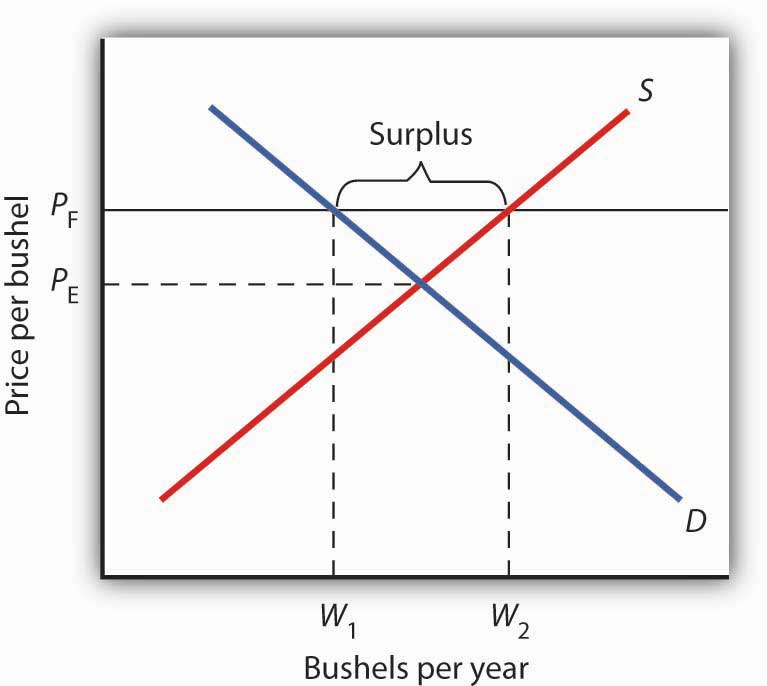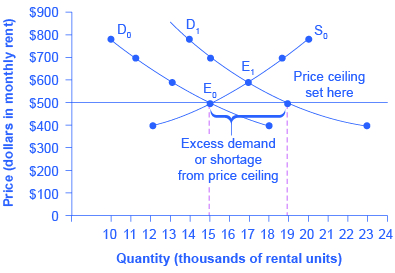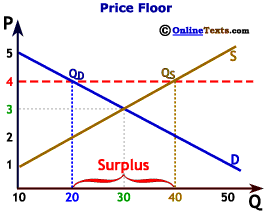The net effect of the price floor in the above activity is that the price floor causes the area h to be transferred from consumer to producer surplus but also causes a deadweight loss of j k.
Price floors eventually create a surplus.
Any employer that pays their employees less than the specified.
It is an implicit tax on producers and an implicit subsidy to consumers.
If price floor is less than market equilibrium price then it has no impact on the economy.
A price floor is the lowest legal price a commodity can be sold at.
Another good example to explain a price floor would be the agriculture market.
Efficiency and price floors and ceilings.
Do these create shortages or surpluses.
Price ceiling a price ceiling is a government set price below market equilibrium price.
The most common price floor is the minimum wage the minimum price that can be payed for labor.
The price floors are established through minimum wage laws which set a lower limit for wages.
Think of an auction where a buyer holds in his mind a price limit.
Price floors are also used often in agriculture to try to protect farmers.
A price floor could be set at p4 causing a surplus of q3 q0.
Price floors transfer consumer surplus to producers.
However price floor has some adverse effects on the market.
But the price floor p f blocks that communication between suppliers and consumers preventing them from responding to the surplus in a mutually appropriate way.
Government set price floor when it believes that the producers are receiving unfair amount.
Consumers are clearly made worse off by price floors.
For example the uk government set the price floor in the labor market for workers above the age of 25 at 7 83 per hour and for workers between the ages of 21 and 24 at 7 38 per hour.
The original consumer surplus is g h j and producer surplus is i k.
Price floors are used by the government to prevent prices from being too low.
A consumer surplus occurs when the price for a product or service is lower than the highest price a consumer would willingly pay.
Suppliers can be worse off.
Price floor is enforced with an only intention of assisting producers.
Quantity demanded will increase and quantity supplied will decrease.
Figure 2 b shows a price floor example using a string of struggling movie theaters all in the same city.
This happens when government puts into place a price floor.
The current equilibrium is 8 per movie ticket with 1 800 people attending movies.
They are forced to pay higher prices and consume smaller quantities than they would with free market.
Price floors cause surpluses.
A surplus occurs when there is more of a supply of a good than is demanded by consumers.









